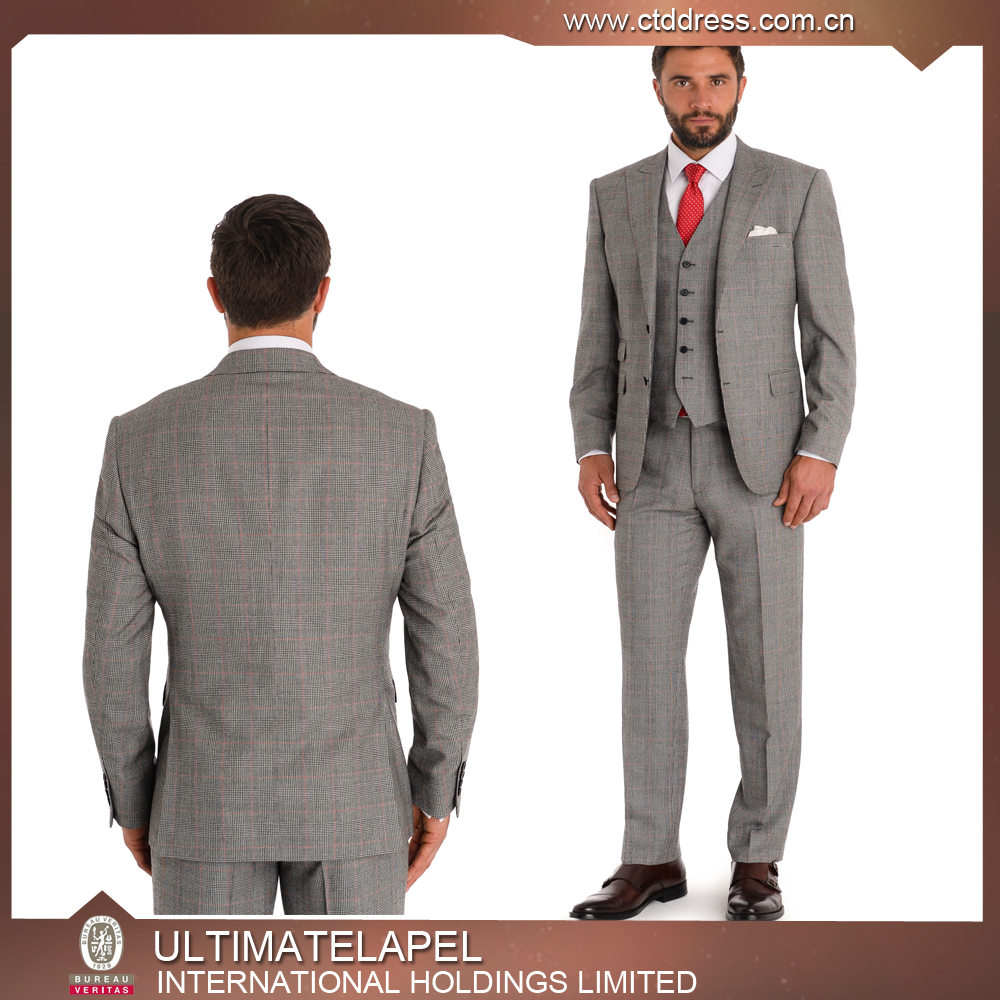Title: The Art of Wearing a Perfect Suit: A Comprehensive Guide to the Classic Mens Attire
Wearing a suit is an art that requires precision and attention to detail. The perfect suit is not just about the clothes, it's also about the way you carry yourself in them. A well-fitted suit can make you feel confident and powerful, while a ill-fitting one can make you look clumsy and unprofessional. To wear a perfect suit, start with the right fit. The shoulders should be relaxed, the waist should fit snugly, and the pants should be comfortable without being too long. Choose a color that complements your skin tone and suits the occasion. Add accessories like a tie, pocket square, and watch to complete the look. When wearing a suit, remember to stand up straight and walk with purpose. Don't forget to iron your clothes and keep them clean. Wearing a perfect suit is more than just dressing well, it's about projecting confidence and professionalism. Follow these simple guidelines and you'll be sure to impress in any situation.
Introduction
A well-crafted suit is a timeless piece that can elevate your style and confidence. Whether you are attending a formal event, a business meeting, or simply going out for dinner with friends, a suit can make all the difference. In this guide, we will explore the intricacies of wearing a perfect suit, from the selection of fabric to the details of accessories and grooming. We will also provide tips on how to create a versatile and stylish wardrobe that includes a classic suit. So, let's dive into the world of men's fashion and discover the art of wearing a suit like a true gentleman.

Chapter 1: Understanding the Different Types of Suit Fabrics
When it comes to choosing a suit, one of the most important decisions you will make is the fabric. There are several types of suits available in the market, each with its unique characteristics and suitability for different occasions. In this chapter, we will discuss the common types of suit fabrics and their appropriate uses:
a) Wool: Wool is a popular choice for suits due to its durability, warmth, and softness. It is ideal for colder weather and works well in both casual and formal settings. However, wool can be heavy and require dry cleaning, which can be an inconvenience.
b) Silk: Silk is a luxurious fabric that adds elegance and sophistication to any suit. It is lightweight, breathable, and comfortable to wear. However, silk suits can be expensive and require special care (e.g., avoiding exposure to heat and moisture).
c) Cotton: Cotton is a more affordable option than wool or silk and provides a comfortable fit. It is suitable for warm weather and casual events but may not be suitable for formal occasions. Cotton blends (e.g., cotton/polyester) offer a balance of comfort and durability.
d) Polyester: Polyester is a synthetic fabric that mimics the look and feel of cotton but offers better durability and wrinkle resistance. It is suitable for both casual and formal occasions and is more affordable than wool or silk. However, polyester may not be as soft or breathable as other fabrics.

e) Linen: Linen is a natural fabric that offers breathability and flexibility. It is suitable for warm weather and casual events but may not be suitable for formal occasions due to its lack of durability and wrinkles easily.
f) Nylon: Nylon is a durable fabric that is resistant to stains and wrinkles. It is suitable for both casual and formal occasions but may not be as comfortable as other fabrics due to its stiffness.
In addition to these main types of suit fabrics, there are also hybrid fabrics (e.g., cotton/polyester blends) available in various weights (e.g., light, medium, heavy) to cater to different styles and preferences. By understanding the properties of different suit fabrics, you can choose the right material for your needs and preferences.
Chapter 2: How to Measure Yourself For a Suit
The key to finding the perfect suit is measuring yourself accurately. Here's what you need to know about measuring yourself for a suit:
a) Chest Measurement: Measure around the fullest part of your chest (usually under the arms) with a measuring tape or shirt sleeve. This measurement corresponds to the size of your jacket's chest pocket. If you have a larger chest circumference, consider going up one size in the chest measurement.

b) Belly Measurement: Measure around the smallest part of your waistline (usually above your hip bone) with a measuring tape or shirt sleeve. This measurement corresponds to the size of your trousers' waist size. If you have a smaller waist circumference, consider going down one size in the belly measurement.
c) Hip Measurement: Measure around the fullest part of your hips with a measuring tape or shirt sleeve. This measurement corresponds to the size of your trousers' leg length. If you have larger hips, consider going up one size in the hip measurement; if you have smaller hips, consider going down one size in the hip measurement.
d) Inseam Length: Measure from the top of your inside leg (where your socks begin) to the bottom of your ankle (about 1 inch below your ankle bone). This measurement corresponds to the length of your trousers' inseam width. If you prefer your trousers to be slightly longer or shorter, adjust this measurement accordingly.
Once you have measured yourself accurately, consult with a tailor or use online sizing charts provided by the suit manufacturer to find the perfect fit for your body type. Remember that tailoring can significantly improve the overall appearance and fit of your suit, so don't hesitate to invest in professional fitting services if necessary.
Articles related to the knowledge points of this article:
The Iconic Allure of Hermes Ties: An Exquisite Exploration of Timeless Luxury
The rise of the ultra-light down jacket
Title: Embroidering Elegance: Beautiful Words on Silk Scarfs
LI-NING MEN’S DOWN COAT: A WINTER ESSENTIAL
Title: Embracing the Vibrant World of Silk Scarf Dying: A Masterpiece in Textile Art



